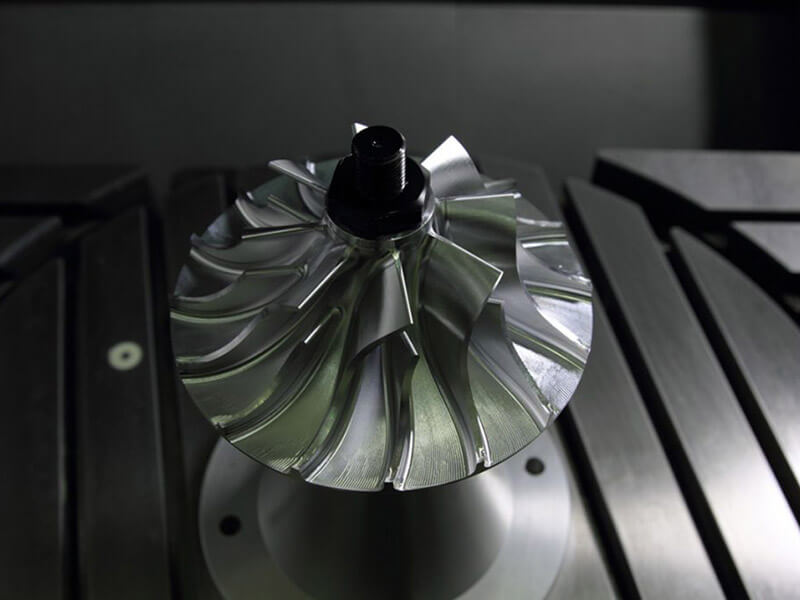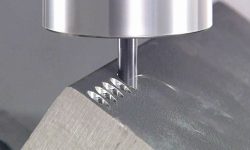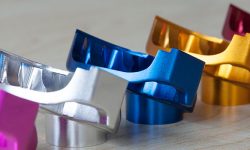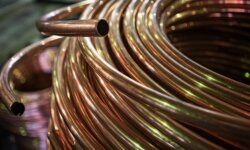Brass, a versatile and widely used alloy, is primarily composed of copper and zinc. Its unique properties and advantages make it suitable for a wide range of applications, from decorative objects and hardware to plumbing fittings and marine components.
With various types of brass available, each with distinct characteristics, this alloy continues to be a popular choice across industries for its strength, workability, corrosion resistance, and aesthetic appeal. Let’s explore each one and its properties.
Alpha Brass (CuZn)
Alpha brasses are single-phase alloys with a composition of 55-65% copper and 35-45% zinc. They exhibit a face-centered cubic (FCC) crystal structure.
Technical Specifications
Alpha brasses are known for their excellent cold workability, which is a result of their ductility. They offer good corrosion resistance and are often used for forming and drawing applications. These alloys can be hardened through cold working, and their mechanical properties can be improved by adding small amounts of elements like iron, aluminum, and silicon.
Advantages
The primary advantages of alpha brasses include their excellent cold workability, good corrosion resistance, and attractive appearance. They are often used for architectural and decorative applications due to their bright color and ability to maintain a polished finish.
Alpha-Beta Brass (CuZn40)
Alpha-beta brasses, also known as duplex brasses, contain approximately 60% copper and 40% zinc. They exhibit a two-phase structure with both alpha (FCC) and beta (body-centered cubic or BCC) phases.
Technical Specifications
These brasses have a combination of good cold and hot working properties, making them suitable for forging, pressing, and machining applications. They can be heat-treated to achieve different levels of strength and ductility, and small amounts of lead can be added to improve machinability.
Advantages
Alpha-beta brasses offer good strength, combined hot and cold workability, and good corrosion resistance. They are used in applications that require strength and durability, such as gears, valves, and fittings.
High-Zinc Beta Brass (CuZn15)
High-zinc beta brasses contain around 15% copper and 85% zinc. They have a BCC crystal structure and exhibit a single-phase structure.
Technical Specifications
These brasses are primarily used for die-casting due to their low melting point and good fluidity. They offer good wear resistance and can be strengthened through heat treatment. However, they are more susceptible to stress corrosion cracking than other brass types.
Advantages
High-zinc beta brasses are valued for their excellent casting properties, good wear resistance, and lower cost compared to other brass types. They are commonly used in the production of die-cast components, such as locks, hinges, and fasteners.
Leaded Brass (CuZn39Pb3)
Leaded brasses are alloys with a small percentage of lead (usually 1-3%) added to improve machinability.
Technical Specifications
Leaded brasses are easy to machine and are suitable for applications requiring high-speed machining and complex shapes. They offer good corrosion resistance, can be cold worked, and are typically used for turned or milled components. However, they have reduced ductility compared to non-leaded brasses.
Advantages
The primary advantage of leaded brasses is their excellent machinability. They also offer good corrosion resistance and an attractive appearance, making them suitable for applications such as plumbing fittings, valves, and decorative hardware.
Naval brass contains around 60% copper, 39% zinc, and 1% tin, which enhances its resistance to dezincification.
Technical Specifications
This brass type is particularly suitable for marine applications due to its high corrosion resistance in seawater. It offers good strength, wear resistance, and can be hot worked or cold worked. Naval brass can also be soldered and brazed.
Advantages
Naval brass is valued for its excellent corrosion resistance, good strength, and wear resistance. Common applications include marine hardware, ship propellers,bushings, and bearings. Due to its ability to withstand the harsh marine environment, naval brass is an ideal choice for components exposed to seawater and other corrosive environments.
Yellow Brass (CuZn33)
Yellow brass contains approximately 67% copper and 33% zinc, giving it a bright yellow color. It is also known as cartridge brass due to its use in ammunition casings.
Technical Specifications
Yellow brass has good cold working properties and can be easily formed into various shapes. It offers good corrosion resistance and moderate strength. Yellow brass can be soldered, brazed, and welded with proper techniques.
Advantages
The aesthetic appearance of yellow brass is one of its primary advantages, making it popular for decorative purposes such as hardware, ornaments, and sculptures. Its good cold workability, corrosion resistance, and compatibility with various joining techniques make it a versatile material for a wide range of applications, including plumbing fittings and musical instruments.
Red Brass (CuZn15)
Red brass contains about 85% copper and 15% zinc, giving it a reddish color. It is also sometimes referred to as gunmetal or 85-5-5-5 due to its composition, which includes small amounts of tin, lead, and iron.
Technical Specifications
This brass type has good corrosion resistance and is commonly used for plumbing applications. It is suitable for casting and offers moderate strength and good machinability. Red brass can be soldered, brazed, and welded with proper techniques.
Advantages
Red brass offers good corrosion resistance, an attractive appearance, and suitability for casting. Its reddish color makes it popular for decorative applications and hardware, while its corrosion resistance and machinability make it a common choice for plumbing fittings, valves, and pumps.
Conclusion
Each type of brass has unique properties and advantages that make it suitable for various applications. When choosing a type for your projects always do you research to understand which brass will best satisfy your requirements.
Alpha brasses are known for their excellent cold workability and appearance, while alpha-beta brasses offer a combination of strength and workability. High-zinc beta brasses are valued for their casting properties, and leaded brasses excel in machinability. Naval brass is ideal for marine applications due to its corrosion resistance, and both yellow and red brasses are popular for their aesthetic appeal and versatility in different applications.








